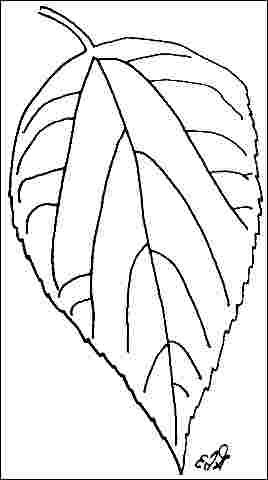Introduction
Japanese hackberry reaches a height of 40 to 60 feet, is a rapid-grower, and transplants easily. It can be 20 to 25 feet tall and wide 10 years after planting. Trees are very similar to the common hackberry, Celtis occidentalis, just smaller, and the 4-inch-long leaves have wavy, toothed margins. The mature bark is light grey, rough and corky, and the small, dark orange-colored fruits are relished by birds. The seeds are hard and people could slip and fall on them if they drop on a hard surface.

Credit: Ed Gilman
General Information
Scientific name: Celtis sinensis
Pronunciation: SELL-tiss sye-NEN-sis
Common name(s): Japanese hackberry, Chinese hackberry
Family: Ulmaceae
USDA hardiness zones: 5A through 9B (Fig. 2)
Origin: not native to North America
Invasive potential: weedy native
Uses: tree lawn > 6 ft wide; street without sidewalk; shade; highway median
Availability: not native to North America

Description
Height: 40 to 60 feet
Spread: 35 to 50 feet
Crown uniformity: irregular
Crown shape: round, spreading
Crown density: moderate
Growth rate: fast
Texture: medium
Foliage
Leaf arrangement: alternate (Fig. 3)
Leaf type: simple
Leaf margin: serrate
Leaf shape: elliptic (oval)
Leaf venation: pinnate, bowed
Leaf type and persistence: deciduous
Leaf blade length: 2 to 4 inches
Leaf color: green
Fall color: yellow
Fall characteristic: not showy

Flower
Flower color: unknown
Flower characteristics: not showy
Fruit
Fruit shape: round
Fruit length: less than .5 inch
Fruit covering: fleshy
Fruit color: orange
Fruit characteristics: attracts birds; not showy; fruit/leaves a litter problem
Trunk and Branches
Trunk/bark/branches: branches droop; showy; typically one trunk; thorns
Pruning requirement: needed for strong structure
Breakage: susceptible to breakage
Current year twig color: green, brown
Current year twig thickness: thin
Wood specific gravity: unknown
Culture
Light requirement: full sun, partial sun, or partial shade
Soil tolerances: clay; sand; loam; slightly alkaline; acidic; well-drained; occasionally wet
Drought tolerance: high
Aerosol salt tolerance: unknown
Other
Roots: can form large surface roots
Winter interest: yes
Outstanding tree: no
Ozone sensitivity: unknown
Verticillium wilt susceptibility: unknown
Pest resistance: resistant to pests/diseases
Use and Management
Skilled pruning is required several times during the first 15 years of life to prevent formation of weak branch crotches and multiple trunks. It could be used in street plantings where there is plenty of soil space since it tolerates most soils and grows in sun or partial shade, but branches may break out from the trunk if proper pruning and training is not conducted early in the life of the tree.
The trunk is often injured if the tree is planted too close to the street in a restricted soil space. Hackberry has a reputation for internal trunk rot, particularly following mechanical injury to the trunk. Locate the tree so it will not be injured by mowing equipment or other vehicles, and keep grass away from the base of the trunk so string trimmers will not cause injury.
No leaf galls form on the foliage of this species which is quite unlike other species of hackberry. But large-diameter surface roots can form (particularly in poorly-drained soil) raising sidewalks and making mowing grass difficult. Locate the tree 8 feet or more from a sidewalk or street to help keep them intact.
Japanese hackberry will grow rapidly in a variety of soil types from moist, fertile soils to hot, dry locations in the full sun. It is wind- and drought-tolerant once established.
Propagation is by seed or cuttings.
Pests and Diseases
No pests or diseases are of major concern. If this tree responds similarly to common hackberry, the trunk can rot following mechanical injury. Not seen with leaf gall which is so common on Celtis occidentalis.